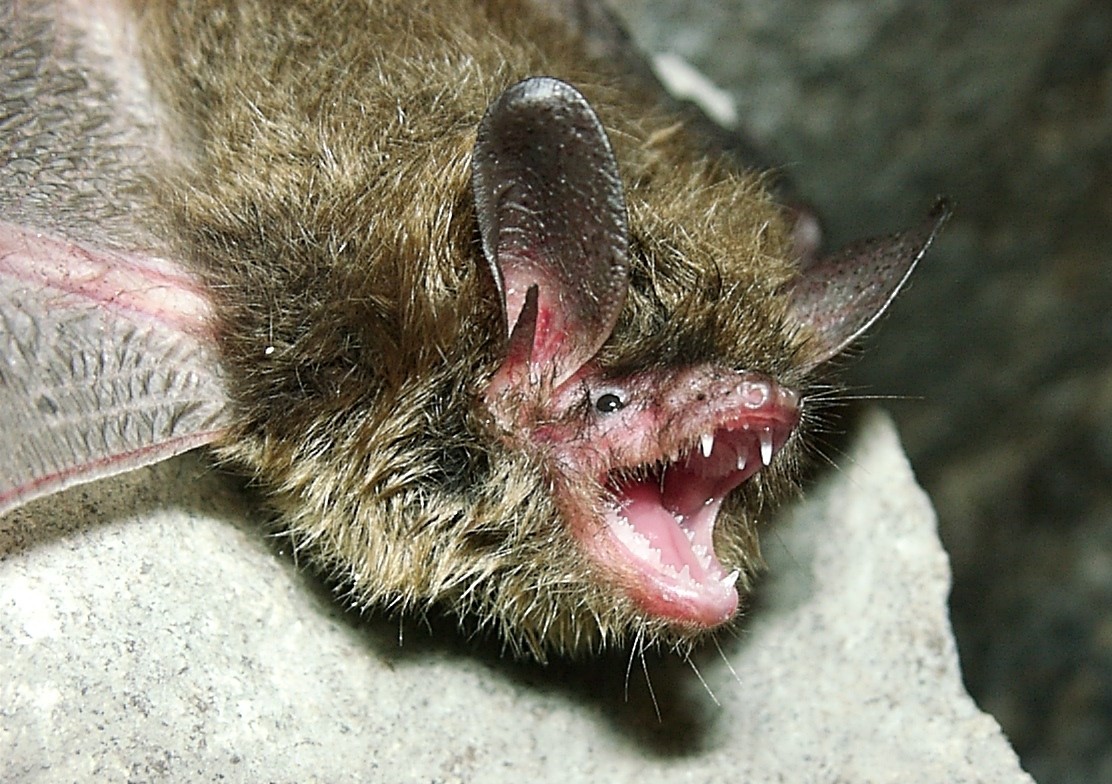Northern long-eared bat
A species of Mouse-eared bats, Also known as Northern long-eared myotis Scientific name : Myotis septentrionalis Genus : Mouse-eared bats
Northern long-eared bat, A species of Mouse-eared bats
Also known as:
Northern long-eared myotis
Scientific name: Myotis septentrionalis
Genus: Mouse-eared bats
Content
Description General Info
 Photo By U.S. Fish and Wildlife Service Headquarters , used under CC-BY-2.0 /Cropped and compressed from original
Photo By U.S. Fish and Wildlife Service Headquarters , used under CC-BY-2.0 /Cropped and compressed from original Description
The northern long-eared bat is a small bat, measuring an average of 8.6 cm (3.4 in) in total length, including a tail about 4 cm (1.6 in) long. Adults weigh between 5 and 8 g (0.18 and 0.28 oz). The fur and wing membranes are light brown in color, and the bat lacks the dark shoulder spots found in the closely related, and otherwise similar Keen's myotis. Compared to other Myotis species, these bats have long ears with a relatively long, pointed tragus; when folded forwards the ears extend well past the nose. They also have a longer tail and larger wing area than most comparably sized Myotis bats, giving them increased maneuvrability during slow flight. 
General Info
Lifespan
18 years
Diet
Northern long-eared bat predominantly feeds on small insects, with a preference for beetles, moths, and flies. Its diet also includes spiders, underlining its role as a versatile nocturnal predator.
Appearance
The northern long-eared bat is a small bat with a slender body, delicate features, and long fur that's usually brownish or orangish. Its wing membranes and tail are blackish. The species has distinctive long ears, with a characteristic rounded 'tragus,' and a pointed muzzle. Females tend to be slightly larger than males. There are no noted age-related variants in appearance.
Behavior
Northern long-eared bat is primarily a solitary species known for its crepuscular foraging habit, often feeding on small flying insects. Notably, it exhibits a unique behavior of hibernating in cold habitats during winter. Despite being solitary, this species shows cooperation, as multiple individuals often roost together in cavities or caves.
Population
Decreasing

 Photo By U.S. Fish and Wildlife Service Headquarters , used under CC-BY-2.0 /Cropped and compressed from original
Photo By U.S. Fish and Wildlife Service Headquarters , used under CC-BY-2.0 /Cropped and compressed from original Scientific Classification
Phylum
Chordates Class
Mammals Order
Bats Family
Evening birds Genus
Mouse-eared bats Species
Northern long-eared bat